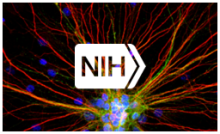
In recent weeks, the NIH BRAIN Initiative released five new requests for applications (RFAs) related to human neuroscience research that range from the development of invasive stimulating and recording devices to investigating non-invasive imaging techniques. These RFAs rely on partnerships between clinicians, laboratory scientists, device manufacturers, and also include a research agreement by the Australian National Health and Medical Research Council.
As part of the BRAIN Initiative, NIH is interested in advancing our understanding of how the human brain works, and how disrupted neural circuits can be treated to overcome the devastating effects of brain disorders. To achieve these goals, the NIH has released five new requests for applications (RFAs) for fiscal year 2016. The approaches range from research using implantable devices for brain therapeutics, to studies aimed at understanding the neural circuit mechanisms of non-invasive human brain imaging signals.
The research will involve interdisciplinary collaborations, including partnerships between clinical and academic investigators, between public and private entities, and between international funding agencies. These efforts enable significant progress toward the scientific vision and research priority areas outlined in the Brain 2025 Report.
Three announcements are tied together in the BRAIN Public Private Partnership Program, the details of which can be found in this BRAIN Update post. The RFAs currently include:
- (X02) Pre-applications for Industry Partnerships to Provide Early Access to Devices for Stimulation and Recording in the Human Central Nervous System (Receipt Date November 18, 2015)
- (UG3/UH3) Next-Generation Invasive Devices for Recording and Modulation in the Human Central Nervous System (Receipt Date April 26, 2016)
- (UH3) Clinical Studies to Advance Next-Generation Invasive Devices for Recording and Modulation in the Human Central Nervous System (Receipt Date April 26, 2016)
An additional RFA for research to understand human brain function and dysfunction using invasive techniques for human brain research is Research Opportunities Using Invasive Neural Recording and Stimulating Technologies in the Human Brain (U01). Several barriers make it challenging to conduct human studies using invasive technology for recording and stimulating neurons in localized brain structures. Such barriers include limited numbers of patients and resources available to implement complex experimental protocols, and an inability to address research questions with appropriate statistical power. This RFA seeks applications to assemble integrated, multi-disciplinary teams to overcome these fundamental barriers. The proposed experimental projects or exploratory research and planning activities should maximize opportunities to conduct innovative in vivo neuroscience research incorporating brain recording and stimulation that are made possible by direct access to the human nervous system during invasive surgical procedures, or in the context of chronic implants that are used for brain therapeutics. The receipt date for this RFA is December 15, 2015.
Another announcement, Foundations of Non-Invasive Human Brain Imaging and Recording – Bridging Scales and Modalities (U01), seeks to improve understanding of the dynamic function of the human brain using non-invasive imaging techniques that are suited to the general human population. Responses should focus on determining what the signals detected with non-invasive neuroimaging and functional evaluation techniques reveal about the underlying neural circuitry, with an emphasis on determining how the acquired signal at one level informs our understanding of activity at other levels. A key to achieving these goals will be bridging microscopic and macroscopic scales across temporal and spatial domains. This announcement also connects to a collaborative agreement between the NIH and the Australian National Health and Medical Research Council, which will provide funding for Australian investigators who apply to the RFA. The receipt date for this RFA is January 6, 2015.
Details on these RFAs and all of the active NOFOs related to the NIH BRAIN Initiative can be found on our Funding Opportunities page http://braininitiative.nih.gov/funding_active.htm.
